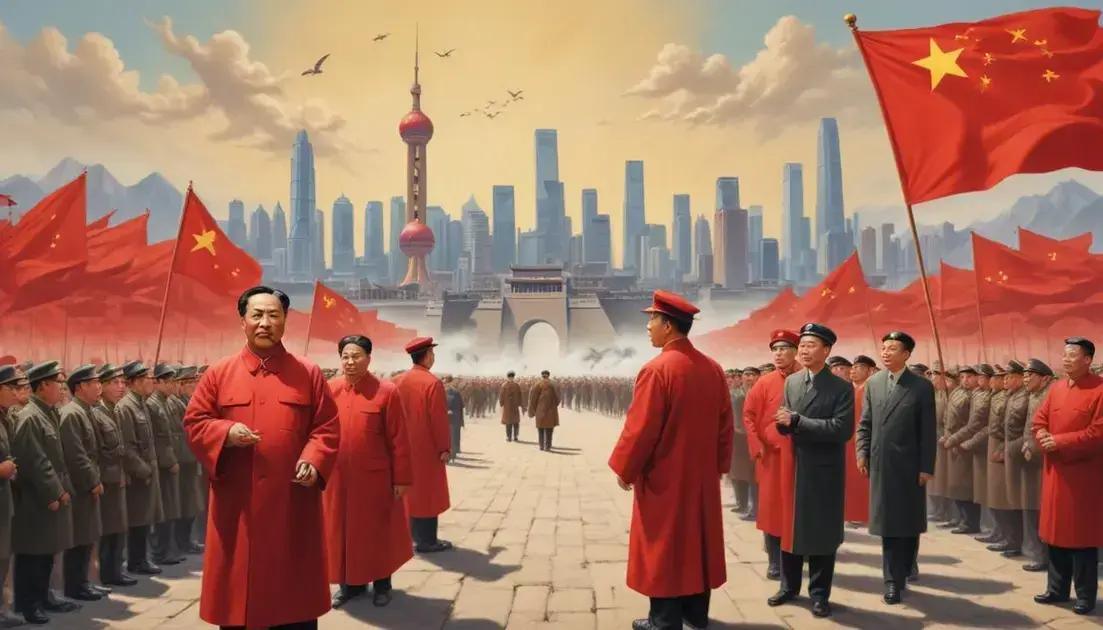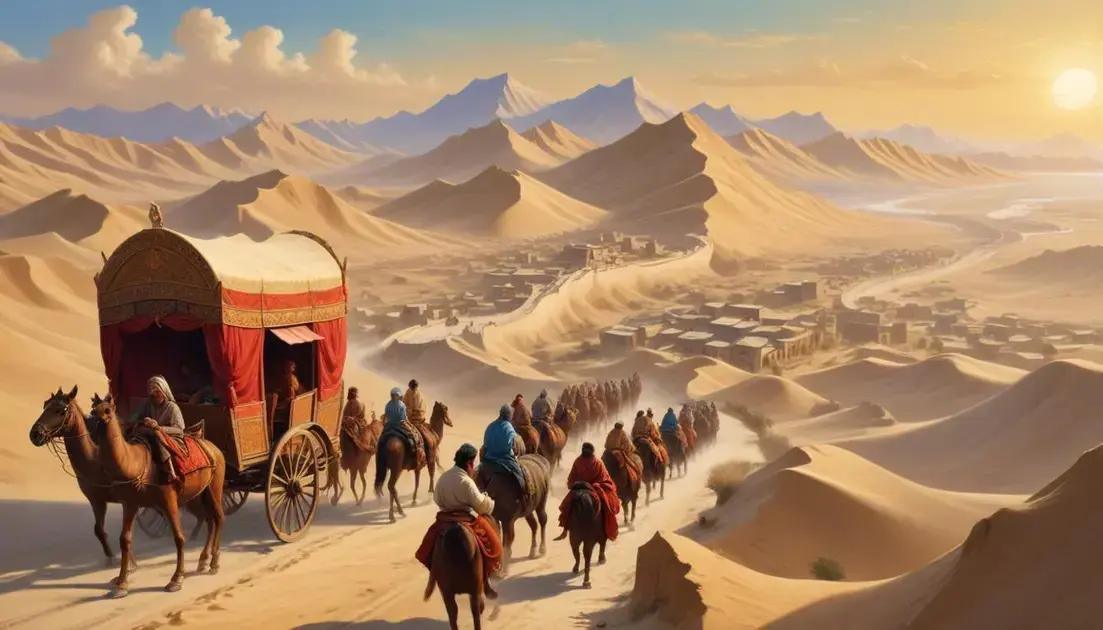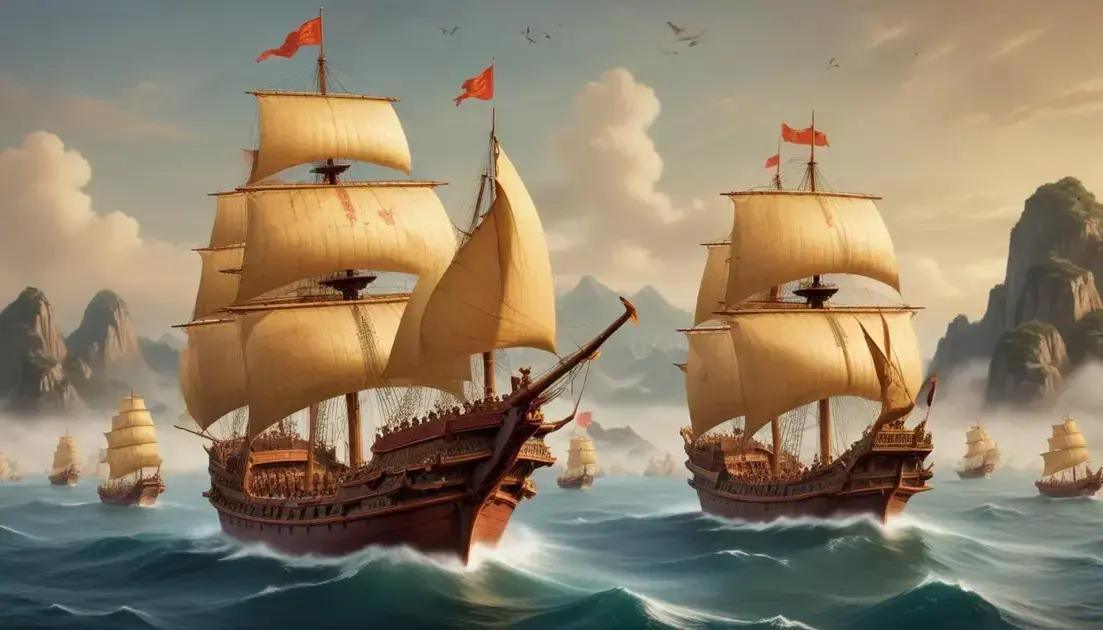
China: the giant awakened
China is rapidly emerging as a global powerhouse, impacting the world economy through robust trade, technological advancements, and significant political changes. Its economic growth has made it a key player on the international stage, driving innovations in various sectors such as technology and infrastructure. However, the rise of China also brings challenges, including geopolitical tensions and social issues. Understanding China’s trajectory is crucial for navigating future global relations and market dynamics.
To put it simply, the emergence of China on the global stage has been nothing short of transformative. What does this mean for the rest of the world?
Historical context of China’s rise
The historical context of China’s rise is both fascinating and complex. For centuries, China was a leader in innovation and culture. It contributed inventions like paper and the compass, shaping the world.
Ancient Times
In ancient times, China was known for its vast empires and rich traditions. The Silk Road connected China to the West, boosting trade and cultural exchange. This period laid the groundwork for future prosperity.
The Dynastic Rule
Dynasties such as the Tang and Ming were marks of China’s power. They promoted arts, literature, and science. Each dynasty left a unique impact on China’s identity and capabilities.
Modern Era Changes
The 20th century brought huge shifts. After years of conflict, the Communist Party took over in 1949. This led to major changes in government and economy, aiming to modernize the nation. Reforms began in the late 1970s, opening China to global trade and investment.
China’s Economic Growth
Since then, China has experienced rapid growth. It transformed from an agricultural society to an industrial powerhouse. Urban areas expanded, and millions have moved from rural regions to cities for better opportunities.
Today, China stands as a global leader. Its historical journey shows how resilience and innovation can lead to significant change. Understanding this history helps us see how China impacts the world today.
Impact on global economy
The impact of China on the global economy is immense. Over the last few decades, China has become a key player in international trade. Businesses worldwide depend on Chinese products and manufacturing.
Trade Relationships
China’s trade partnerships are crucial for various nations. It exports electronics, clothing, and machinery, among other goods. Many countries rely on imports from China to support their economies.
Investment in Infrastructure
China has invested heavily in infrastructure projects abroad. The Belt and Road Initiative aims to connect Asia with Europe and Africa. This plan has built roads, railways, and ports, creating new trade routes.
Influence on Global Markets
As the second-largest economy, China’s decisions affect global markets. When China grows, demand for resources increases. This can boost prices for commodities like oil and metals.
Challenges and Opportunities
While China’s growth presents opportunities, it also brings challenges. Competition can hurt local businesses in other countries. Understanding China’s economic influence helps nations navigate these changes.
Overall, China’s role in the global economy will keep growing. Its actions and policies will continue to shape the future of trade and commerce worldwide.
Political changes and challenges
China’s political changes and challenges are significant in today’s world. Since the Communist Party took power in 1949, China’s political system has evolved. The government aims to maintain control while promoting growth.
Centralized Control
The Chinese government is highly centralized. The Communist Party makes key decisions and influences all aspects of life. This control helps maintain stability but can limit personal freedoms.
Economic Reforms
In the late 1970s, China started economic reforms. These changes opened the market, allowing more private businesses. This shift spurred tremendous economic growth but also created inequalities.
Social Challenges
As the economy grows, social challenges arise. Issues like corruption and human rights concerns are significant. Many people seek more political freedom and expression.
International Relations
China’s rise brings changes in international relations. It faces tensions with countries over trade, technology, and territorial disputes. Managing these relationships is crucial for peace and stability.
Overall, the political landscape in China is complex. Balancing control and reform is a continuous challenge. Understanding these dynamics can help us grasp China’s role in the world today.
Future projections and implications
The future of China holds many exciting possibilities. Economic growth and technological advancements will continue to shape its path. Experts predict that China may become the world’s largest economy in the coming years.
Advancements in Technology
China is investing heavily in technology. Innovations in artificial intelligence, 5G, and renewable energy will redefine industries. These investments aim to make China a leader in the global tech landscape.
Growing Middle Class
As the economy grows, so does the middle class. More people will have disposable income to spend. This change will create new markets for both Chinese and foreign companies.
Environmental Concerns
China faces serious environmental challenges. Pollution and resource management are critical issues. The government is focusing on sustainable practices to combat these problems.
Geopolitical Dynamics
China’s rise will affect global politics. Its relationships with other countries could shift. How China interacts with the U.S. and Europe will be crucial for international stability.
Overall, the implications of China’s growth will resonate worldwide. Businesses and countries must adapt and prepare for what lies ahead.
Conclusion
In conclusion, China’s rise as a major global player is reshaping the world in many ways. The country’s economic growth, technological innovations, and political changes are all important factors to consider. As China continues to develop, it will impact global trade, technology, and international relations.
Understanding these dynamics helps us prepare for the future. Countries and businesses must adapt to China’s influence to thrive in the changing landscape. By recognizing both the opportunities and challenges that China presents, we can better navigate this new reality. In short, staying informed about China’s journey is crucial for anyone looking to succeed in the global economy.


